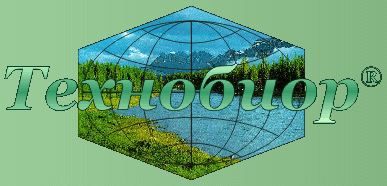OUR COMPANY OFFERS A SLUGDE PROCESSING BY TWO STAGES:
Stage 1: Separation of the concentrated sludge into three components: Concentrate hydrocarbons, water and sand.
Stage 2: Purification of each of the components on the special equipment.
Technological complex, designed for LLP Caspian Eco Service to meet the requirements of the legislation of Kazakhstan, has a modular layout which allows process drilling waste, including waste drilling muds (WDM) and oil sludge of both liquid and solid (paste) forms.
The layout and structure of complex equipment depends on the desired direction of processing - drill cuttings (including WDM) or oil sludge.
The main technological processes implemented in the Complex:
- loading sludge, separation of large mechanical impurities;
- preparation of pulp — scour sludge heating, intense flushing;
- Intensified separating the resulting pulp, including using chemicals, on clean process water, soil (sand), a liquid hydrocarbon (oil) and their separate collection.
SLUDGE. PROCESSING.
Oil sludge are called complex mixtures of oil, water and solids. The ratio of the components of these mixtures varies within very wide limits.
REVIEW OF EXISTING TECHNOLOGIES OF SLUGDE PROCESSING.

Currently, there are technologies and equipment, which are used for processing different kinds of sludge, including: new sludge, chronic sludge, oil sludge precipitation of vertical steel tanks, oil sludge precipitation drainage tanks, oil sludge sediments of coastal areas and other.
The composition and physical properties of the sludge may vary considerably, depending upon the source of contamination. Important unifying factor is that all the sludge contains both water and particulate matter of large and small diameter. Often, they do not form stable emulsions exfoliating. This complicates the process of division, and most of the standard methods, which are recovered sludge is not fully cope with the task.

Thus, in the method of settling is used a slow and inefficient process of sedimentation, which requires large areas for septic tanks and large doses of expensive chemicals.
Filtration through the press divides sludge into two parts — separates impurities from the liquid component, and also has a low throughput. In addition, this process leaves unsolved the problem of disposal of the filtered material and water separation.
Burning oil sludge along with water and mechanical impurities is an expensive process in which valuable hydrocarbon component irrevocably destroyed
All these methods are still used today, but now they are increasingly replaced by more efficient modern methods used in the processing of sludge, watered fuel oil, waste oil, contaminated soil and other types of oil waste.
SLUDGE FORMATION.

While oil production it comes to the surface through the mouth of the wells, which geologists and oilmen call "day surface". Along with it comes a variety of mechanical impurities — particles of rock and cement of the well bore. Furthermore, the oil contains dissolved therein passing gas, water and mineral salts. Mechanical impurities damage the pipes, the salt water is corrosive.
Therefore, before applying the oil into the pipeline, it is cleaned of all impurities in the oil field or by specialized recycling companies that collect oil from several oil fields. Oil is delivered to a central collection point (CCP). On the CCP is located complex for purification and treatment system and system of water treatment. Water is usually pumped back to the oil reservoir to maintain the reservoir pressure. A mechanical impurities separated from the oil form a sludge.
TANK SLUDGE.
One of the sources for the sludge formation are clean up works of tanks and reservoirs, which remains at the bottom of the sediment from the asphalt-paraffin deposits, solids and other substances. The basis of mechanical impurities in the oil sludge tank are particles of iron oxide (rust).
SECONDARY SLUDGE.
Secondary sludge formed during workover and underground repair of wells. Oil sludge are also oil-contaminated soils, formed by accidental oil spills. Sludge are hazardous waste, so they require special disposal or recycling (utilization). Currently there is no satisfactory methods for processing oil sludge. So today oil sludge are a catastrophic factor of environmental pollution.
REMEDIATION OF CONTAMINATED AREAS AND NATURAL SITES.
Works for complex areas remediation with the cleaning of the oil can be grouped into the following three types of:
- Cleaning the surface sources:
- oil sludge pits,
- oil-contaminated soil,
- accidental spills;
- Cleaning the subterranean zones (including kerosene lenses);
- Cleaning the waters facilities:
- sediment recycling,
- elimination of oil foils.
In remediation of areas the following objectives and tasks are pursued:
- Processing of new sludge,
- Recycling of accumulated sludge,
- Elimination of emergency oil spills,
- Recycling the sediments in vertical steel tanks to obtain a useful product,
- Reduce the environmental pressure on the environment.
Sludge recycling is a complex task and includes processing of oil sludge, waste disposal, works at a lower cost, to obtain high quality of useful products, while providing more safety for the environment, which is consistent with the program to ensure the environmental safety of the Kazakhstan Republic.






